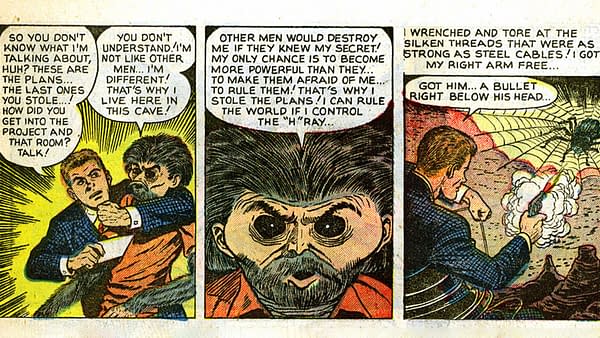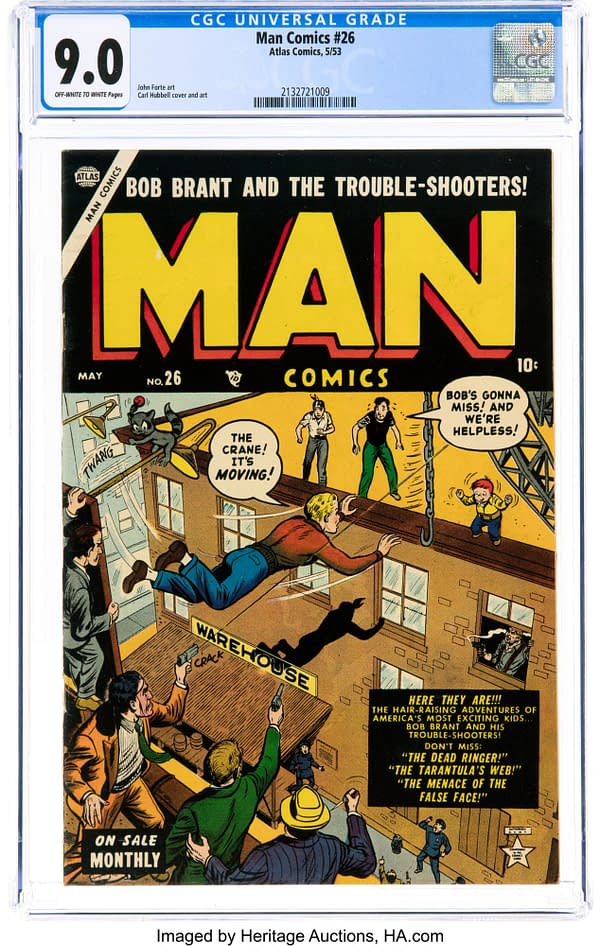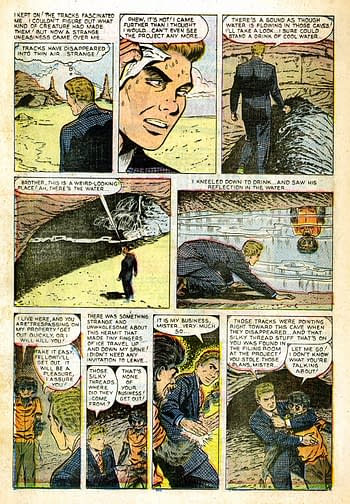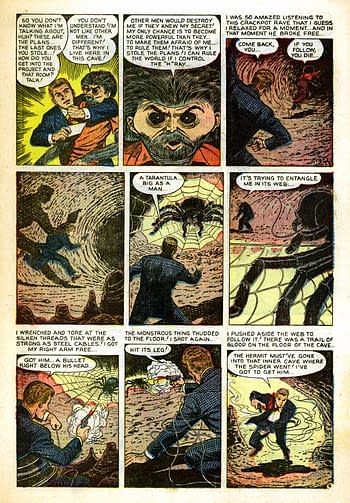Posted in: Comics, Heritage Sponsored, Vintage Paper | Tagged: spider-man
Marvel's First Spider-Man? Human Spider of Man Comics 26, at Auction
Marvel's Man Comics #26 from 1953 features a Spider-Man prototype radiation-transformed human spider at Los Alamos Laboratory.
Article Summary
- Explore this earliest Spider-Man "prototype with Man Comics #26's human spider concept.
- Dive into the 1953 Los Alamos story with agent Lance Brant and the H-Bomb mystery.
- Discover John Forte's art and possible Stan Lee editorial influence in this early Marvel tale.
- See how Man Comics #26 parallels, yet predates Journey into Mystery #73's Spider-Man prototype.
Launched in 1949, Marvel's Man Comics was a title without a clear identity, at least in the beginning. The series began as a general adventure title that occasionally strayed into crime territory. That all changed with the onset of the Korean War, with the title becoming a war comic book for Man Comics #9-25. The series then came into an entirely different focus, following the interconnected Cold War espionage saga of father-son government "troubleshooters" and their family. This reboot gets off to a fantastic start in Man Comics #26 as United Nations agent Lance Brant investigates a security breach at the H-Bomb project of Los Alamos Laboratory which puts him on the trail of a human spider. The details of this story would seem to make this 1953 the first Marvel Spider-Man prototype. It's an even better Spidey prototype than the much later Journey into Mystery #73, and the highest-graded CGC VF/NM 9.0 Off-white to white pages copy of Man Comics #26 (Atlas, 1953) is up for auction in the 2024 October 24 – 25 Pre-Code Horror & Crime Comics Showcase Auction #40272 at Heritage Auctions.

Like the later Journey into Mystery #73, the Man Comics #26 story takes place at Los Alamos Laboratory in New Mexico. Lance Brant has arrived on the scene to investigate the theft of an H-Bomb related device called the H-Ray. The investigation quickly leads him into the caverns of the New Mexico desert, where he discovers that a hermit who has become a human-spider hybrid has stolen the plans and created radiation-powered devices based on them. The implication seems to be that radiation exposure, perhaps from experiments or testing in the region, has somehow transformed this recluse into a man with spider-like characteristics who can become a giant spider at will. That overall transformational concept as the result of radiation exposure was certainly a science fiction theme of this particular early 1950s era. In the end, Lance Brant muses, "Was he human, or spider? Guess I'll never really know."
- Man Comics #26 (Atlas, 1953)
- Man Comics #26 (Atlas, 1953)
Man Comics #26 is every bit the prototype that Journey into Mystery #73 is, plus it's eight years earlier and actually involves a human spider. The artist on this human spider story is John Forte, best remembered for his early run on Legion of Super-Heroes in Adventure Comics. The writer is unknown, but Stan Lee is credited as editor, and this is obviously a very early example of a kind of story that would become familiar at Marvel. This one seems to be surprisingly elusive: This CGC 9.0 copy of Man Comics #26 is the highest-graded and only copy on the CGC census. It's also the first time that Heritage Auctions has offered a copy of this issue, and that copy is up for auction in the 2024 October 24 – 25 Pre-Code Horror & Crime Comics Showcase Auction #40272 at Heritage Auctions.



















